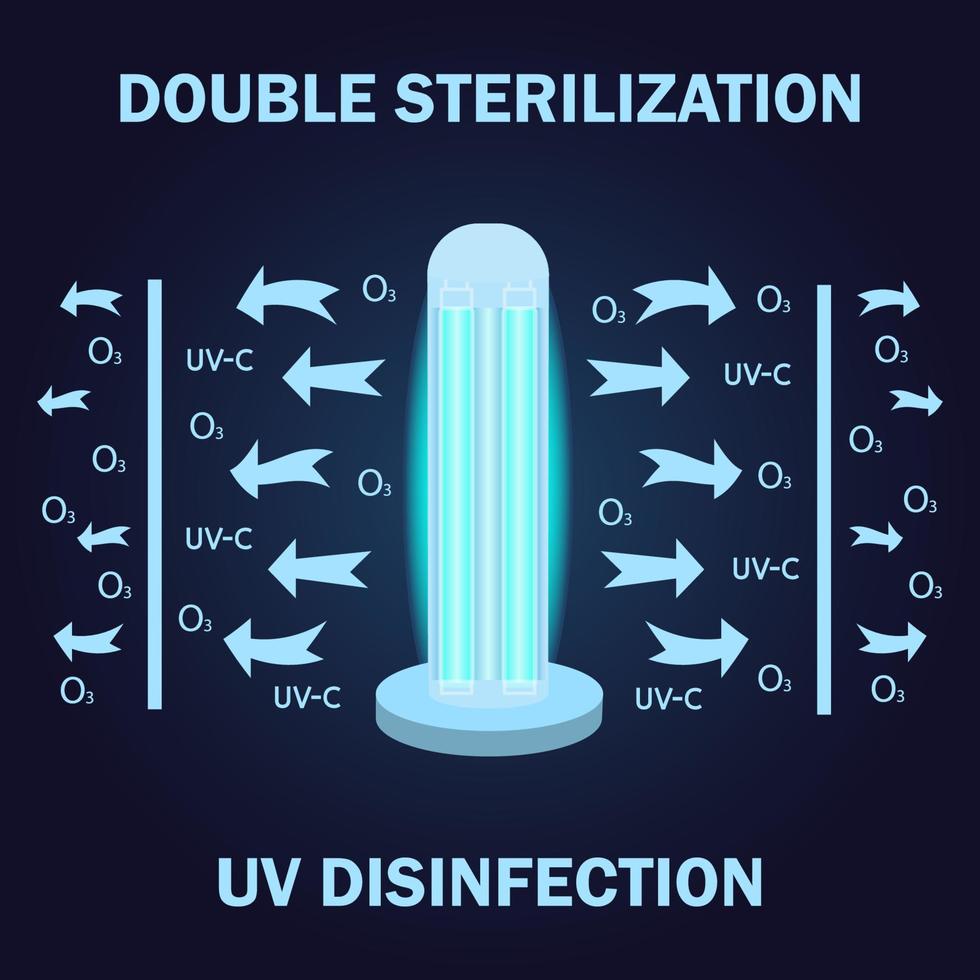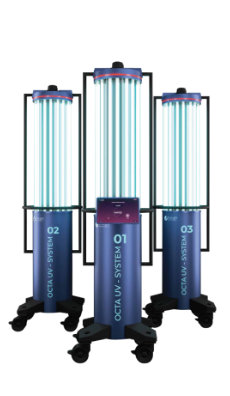Harnessing the Power of UV Surface Disinfection: A Comprehensive Overview for Healthier Spaces
Harnessing the Power of UV Surface Disinfection: A Comprehensive Overview for Healthier Spaces
Blog Article
UV Sanitation: The Cutting-Edge Modern Technology Transforming Cleanliness Practices
In the realm of hygiene methods, one modern technology has arised as a game-changer: UV disinfection. With its ability to remove damaging microorganisms, this innovative modern technology is changing the means we approach tidiness and health. Exactly how does UV sanitation work, and what are the advantages it supplies? From medical care setups to food handling, UV disinfection is making its mark in different sectors. In this conversation, we will certainly discover the complexities of this transformative technology and expect its appealing future.
Exactly How UV Disinfection Works
UV disinfection works by making use of ultraviolet light to damage or inactivate microorganisms, giving a extremely effective and chemical-free approach of cleanliness. This modern technology takes advantage of the power of short-wavelength UV-C light, which can damaging the DNA and RNA of microorganisms, hence rendering them unable to replicate and cause injury.
The procedure begins with the installment of UV sanitation systems, which include UV lamps that give off UV-C light. These lamps are tactically positioned in areas where microbial contamination is a worry, such as water treatment plants, medical facilities, laboratories, and food handling facilities.
When bacteria are exposed to UV-C light, the photons penetrate their cell wall surfaces and reach the DNA and RNA inside. The high-energy UV-C photons interfere with the genetic product by producing bonds in between surrounding nucleotides, resulting in the development of thymine dimers. These dimers protect against the microbes from replicating, providing them safe.
UV sanitation is very reliable against a large range of microbes, including bacteria, bloodsuckers, and infections. It is especially effective versus waterborne pathogens like E. coli, Giardia, and Cryptosporidium. UV sanitation is a chemical-free approach, eliminating the need for potentially hazardous anti-bacterials and lowering the threat of hazardous disinfection spin-offs.
Advantages of UV Sanitation
UV sanitation supplies numerous advantages in the field of sanitation, making it a highly liked approach for successfully getting rid of hazardous microbes. Unlike standard disinfection techniques that rely on chemicals, UV sanitation makes use of ultraviolet light to destroy the DNA of microbes, providing them unable to reproduce and cause infections.

UV disinfection is likewise extremely flexible in its applications. It can be utilized in various settings, including healthcare facilities, colleges, food handling facilities, and water treatment plants. UV disinfection systems can be easily integrated right into existing sanitation practices, providing an additional layer of protection versus transmittable conditions.
Along with its effectiveness and adaptability, UV sanitation is likewise eco-friendly. It does not produce any damaging by-products or residues, making it a lasting and secure method for hygiene - uv surface disinfection. Additionally, UV sanitation needs very little maintenance and has a long life expectancy, resulting in price financial savings in the long run.
UV Sanitation in Health Care Settings
In medical care settings, UV sanitation has actually emerged as a revolutionary method for effectively getting rid of dangerous microbes. UV disinfection functions by sending out ultraviolet light at a certain wavelength that is dangerous to microorganisms, infections, and other bacteria.
To start with, UV sanitation is a non-chemical method, making it an eco-friendly alternative contrasted to standard sanitation techniques that typically include using severe chemicals. The use of UV light gets rid of the need for chemical anti-bacterials, decreasing the risk of hazardous residue or chemical direct exposure to both patients and healthcare workers.
Furthermore, UV sanitation is extremely reliable in eliminating a large range of microorganisms, including drug-resistant bacteria such as MRSA and C. difficile. It offers a trusted and regular sanitation procedure, ensuring that all surfaces and equipment are thoroughly decontaminated, even in hard-to-reach areas.

UV Sanitation in Food Processing
The application of UV disinfection expands past health care settings and locates considerable value in the realm of food processing. uv surface disinfection. UV disinfection technology is becoming increasingly preferred in the food market as a result of its capability to successfully get rid of harmful pathogens and enhance food security
Among the main advantages of UV disinfection in food handling is its ability to target a vast array of microbes, consisting of microorganisms, infections, and mold and mildews. By utilizing UV light at certain wavelengths, it is feasible to interfere with the DNA and RNA of these virus, making them incapable to create or duplicate damage. This innovation can be used to different stages of the food processing chain, including surface disinfection, tools sanitation, and water therapy.
UV disinfection offers a non-thermal and chemical-free technique of sanitizing food products. Unlike traditional sanitation techniques that count on chemicals or heat, UV technology does not leave any kind of deposit or change the taste, texture, or dietary worth of the food. This makes it an ideal solution for sectors that need strict adherence to quality criteria.
In addition, UV sanitation systems are very easy to install and run, calling for very little maintenance. They can be incorporated into existing handling lines without causing significant disturbances to the production process. In addition, UV systems have a quick therapy time, permitting continuous handling and reducing downtime.
The Future of UV Disinfection

One location where UV sanitation is expected to make significant improvements remains in the field of healthcare. With the increase of antibiotic-resistant germs and the demand for more effective disinfection techniques, UV light has the prospective to play a critical role in decreasing healthcare-associated infections. UV disinfection systems can be utilized to sanitize surfaces, devices, and also the air in health care centers, aiding to avoid the spread of hazardous pathogens and enhance individual safety and security.
Another market that could gain from improvements in UV sanitation innovation is the food market. UV light has actually currently shown to be an effective approach for decontaminating foodstuff and reducing the risk of foodborne illnesses. As innovation improves, we can expect to see more reliable and cost-effective UV sanitation systems being carried out in food processing plants, guaranteeing that the food we consume is safe and devoid of unsafe microorganisms.
Final Thought
Finally, UV disinfection is a cutting-edge modern technology that is changing sanitation techniques in health care settings and food handling. By utilizing UV light to kill or shut down microbes, it supplies various benefits such as safety and security, efficiency, and effectiveness. With ongoing advancements in this area, UV disinfection holds great potential for the future of sanitation, giving a reliable and lasting remedy for keeping clean and sanitary settings.
UV sanitation is a you can check here chemical-free method, getting rid of the demand for potentially unsafe anti-bacterials and decreasing the threat of hazardous sanitation byproducts.
Unlike traditional disinfection approaches that rely on chemicals, UV disinfection utilizes ultraviolet light to damage the DNA of microbes, rendering them incapable to replicate and create infections. Unlike traditional disinfection techniques that rely on chemicals or warm, UV modern technology does not leave any kind of residue or change the preference, appearance, or dietary worth of the food. As modern technology improves, we can expect to see much more cost-effective and effective UV disinfection systems Discover More Here being carried out in food handling plants, making sure that the food we eat is risk-free and cost-free from hazardous bacteria.
In conclusion, UV disinfection is a sophisticated modern technology that is changing hygiene practices in medical care setups and food handling.
Report this page